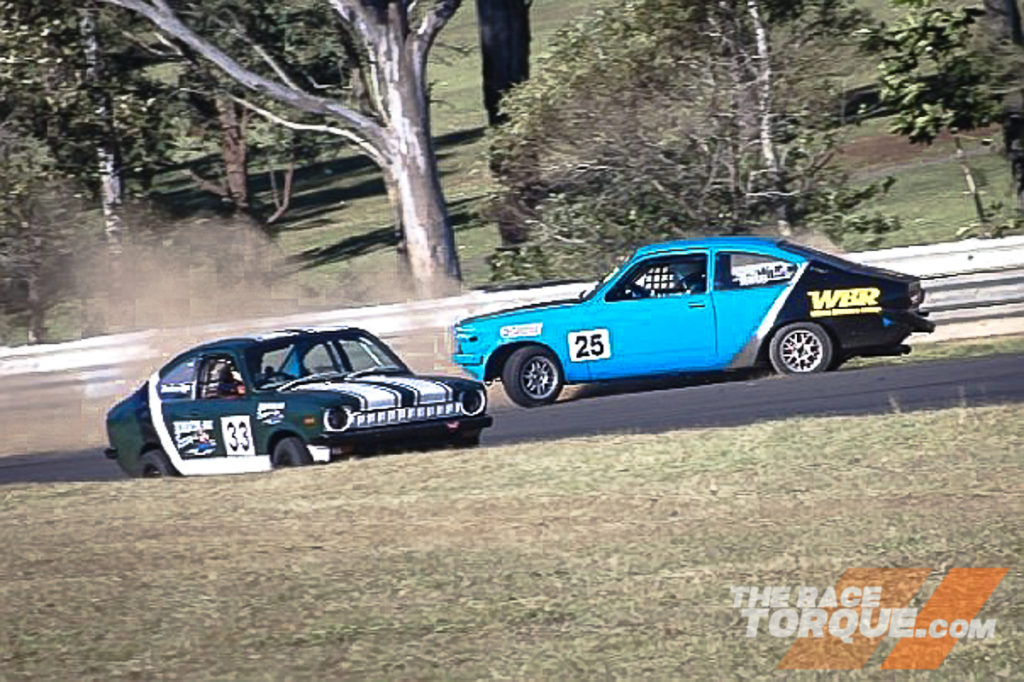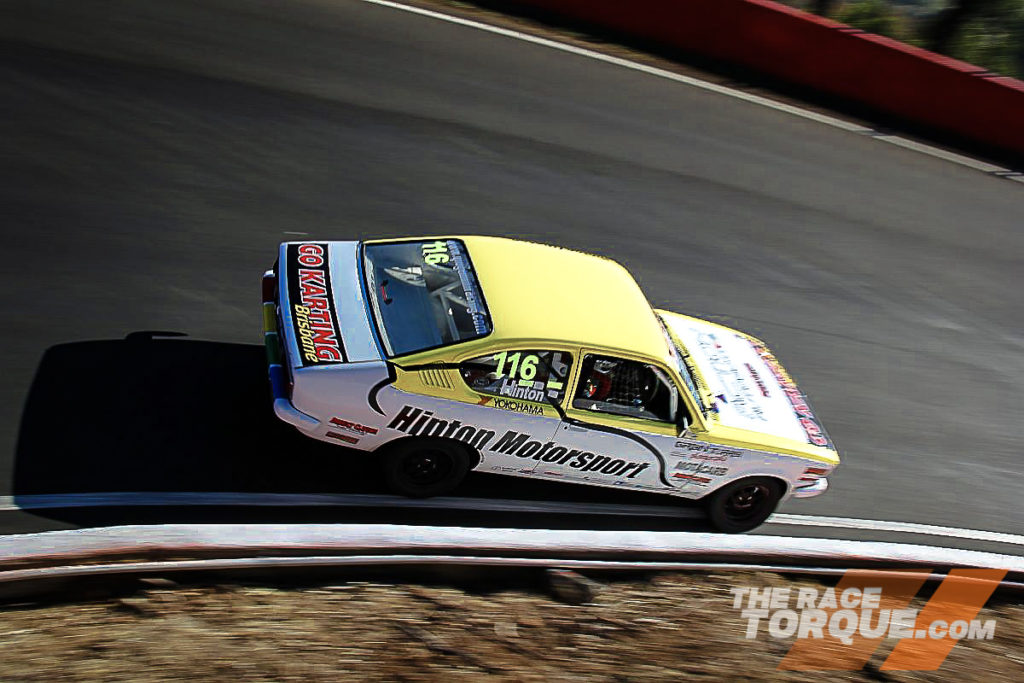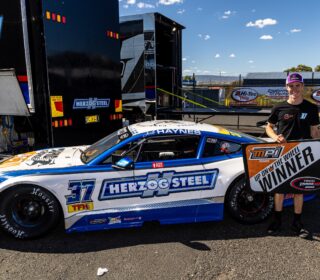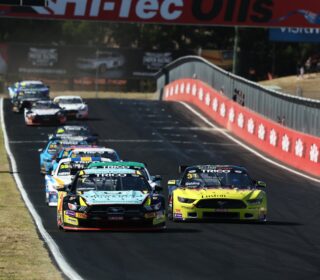THE HOLDEN ONE MAKE LEGACY

THE deeds of the Holden brand in motorsport are legendary, from Monaros to Toranas and Commodores, the marque has been at the forefront of Australian car racing for decades.
WORDS, IMAGES & VIDEO: Mark Walker
While the hero cars have claimed the limelight, it has been some of Rory’s more unlikely nameplates that have formed the backbone of the club motorsport scene.
The first to spring to mind is the notorious HQ Holden class, which has been a fixture on flat tracks and ovals since its genesis in Tasmania in 1988.
However, for longevity, the HQs are a long second place in terms of spec racing series to one: the Queensland Geminis.
While Max Stewart won the 1975 Australian Grand Prix at Surfers Paradise International Raceway, quietly on the undercard, Queensland Holden Dealers provided a 12-car field of mildly modified Geminis that turned on a slip streaming battle around the high-speed circuit.
Subsequently, the cars were sold off to Victoria, where the series took off, but by the end of the decade, with local banana bender competitor numbers dwindling, there was a push to reinvigorate the club scene locally.
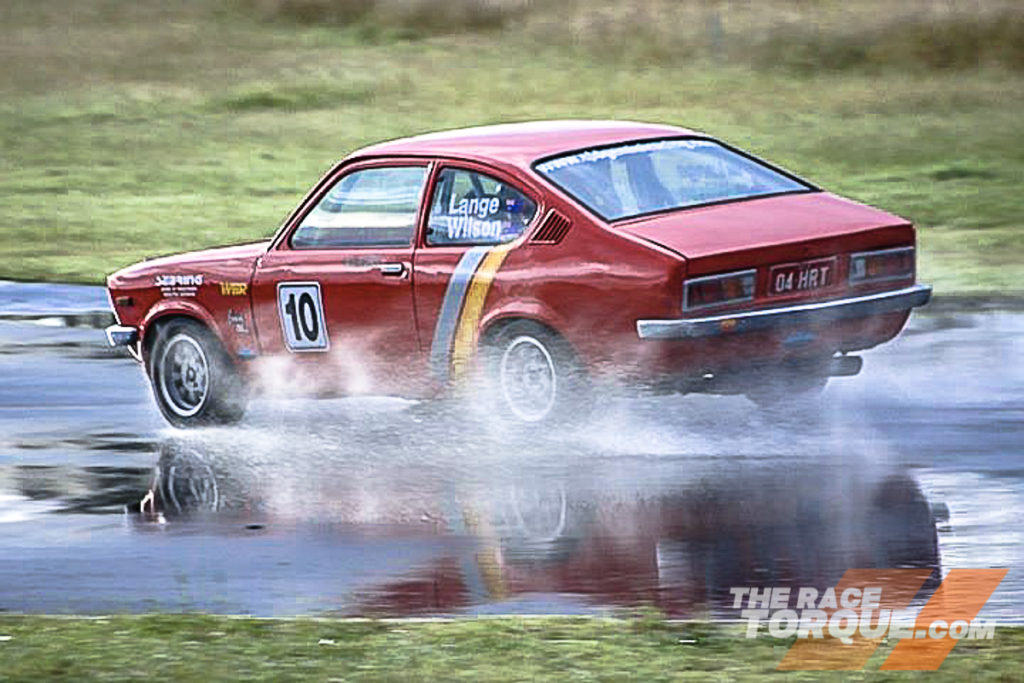
The brainchild of noted motorsport journalist Grahame Ward and car dealer Barry Nixon-Smith, the Queensland Gemini Series hit the track with a field of 13 cars at Lakeside Raceway in March 1980.
Ward and Nixon-Smith both had colourful histories in the sport; Ward raced a Volvo 122S in the 1965 Bathurst Armstrong 500, rallied a Torana A9X in Europe, owned an incredible classic car collection, while he spent a period of time in charge of PR at Surfers Paradise International.
Nixon-Smith meanwhile was hands-on with the club for decades, with his own driving exploits seeing him compete in Touring Car racing in the mid-1970s, with a highlights including a third place finish in the Phillip Island 500K in 1973 behind Peter Brock and Colin Bond, and a fifth place at the 1975 ATCC round at Amaroo Park.
Over time, hundreds of the coupe and four door versions of the Gemini were log booked from the 226,319 generation one cars built between 1975 to 1985, with the category launching numerous professional careers over time.
From Bathurst winners Tony Longhurst and Paul Morris, the 1980s featured racers such as Troy Dunstan, Kevin Heffernan, Wayne Park, Craig Harris, Rod Dawson, Phil Crompton, Ian Palmer and Tony Scott.
Others would join the alumni over the years, such as Wayne Wakefield, Brett Francis and Shane Bradford, while more would use it to get a tick on their CAMS license, such as Jack Elsegood, Ryal Harris, Ryan Hansford, Ben Grice and Josh Hunt, amongst many.
Why did Gemini racing work? The simplicity of the cars, keeping them relatively standard, incredibly close racing, as well as the dynamics of rear wheel drive were all a part of the charm.
As time has gone by, more freedoms have crept in to keep the racing cheap and the cars serviceable, although for a long period, there have been freedoms in the front suspension, which has taught drivers how to tune a race car.
These days the Geminis have gone from being an asterisk in the CAMS rule book to being a subset of Improved Production racing, and the fields are commonly combined with the HQs, which remarkably are capable of similar lap times, which culminated in the duo competing together on the support program at the Bathurst 12 Hour in 2013 and ’14.
The last time the two classes met at The Mountain, a pair of one hour races were contested, with both models claiming a win apiece, with the Gemini capable of a best lap time of a 2:59sec, while the HQ broke through to the 2:58sec bracket.
While the capacity fields of the past are no longer a reality, race ready cars have traded for less than $5,000 in recent years, making it still a ridiculously cheap form of the sport.
THE humble Gemini is currently celebrating its 45th anniversary, some further information on local celebrations can be found here.






